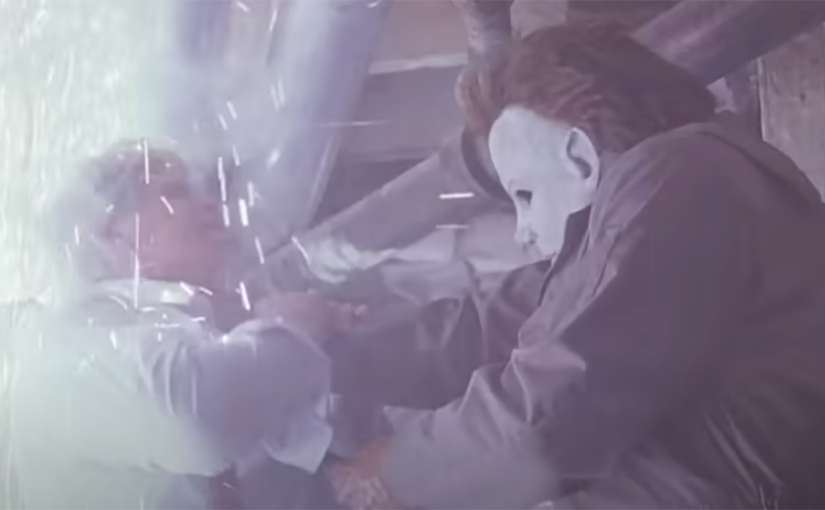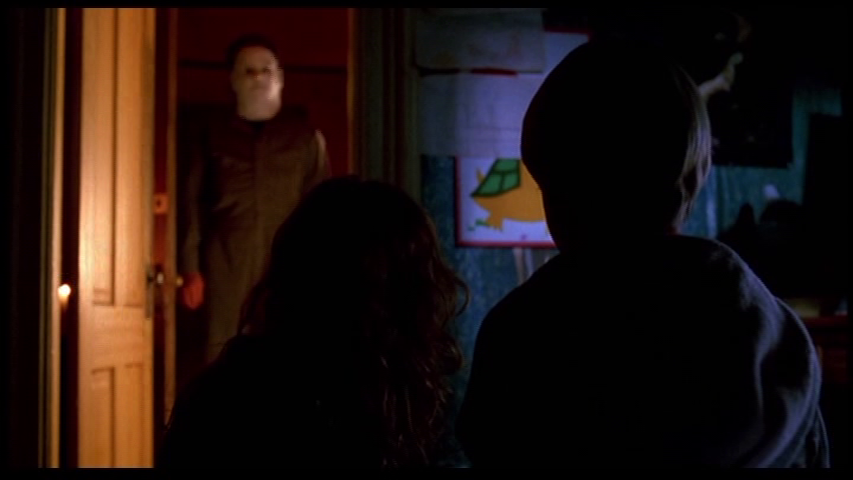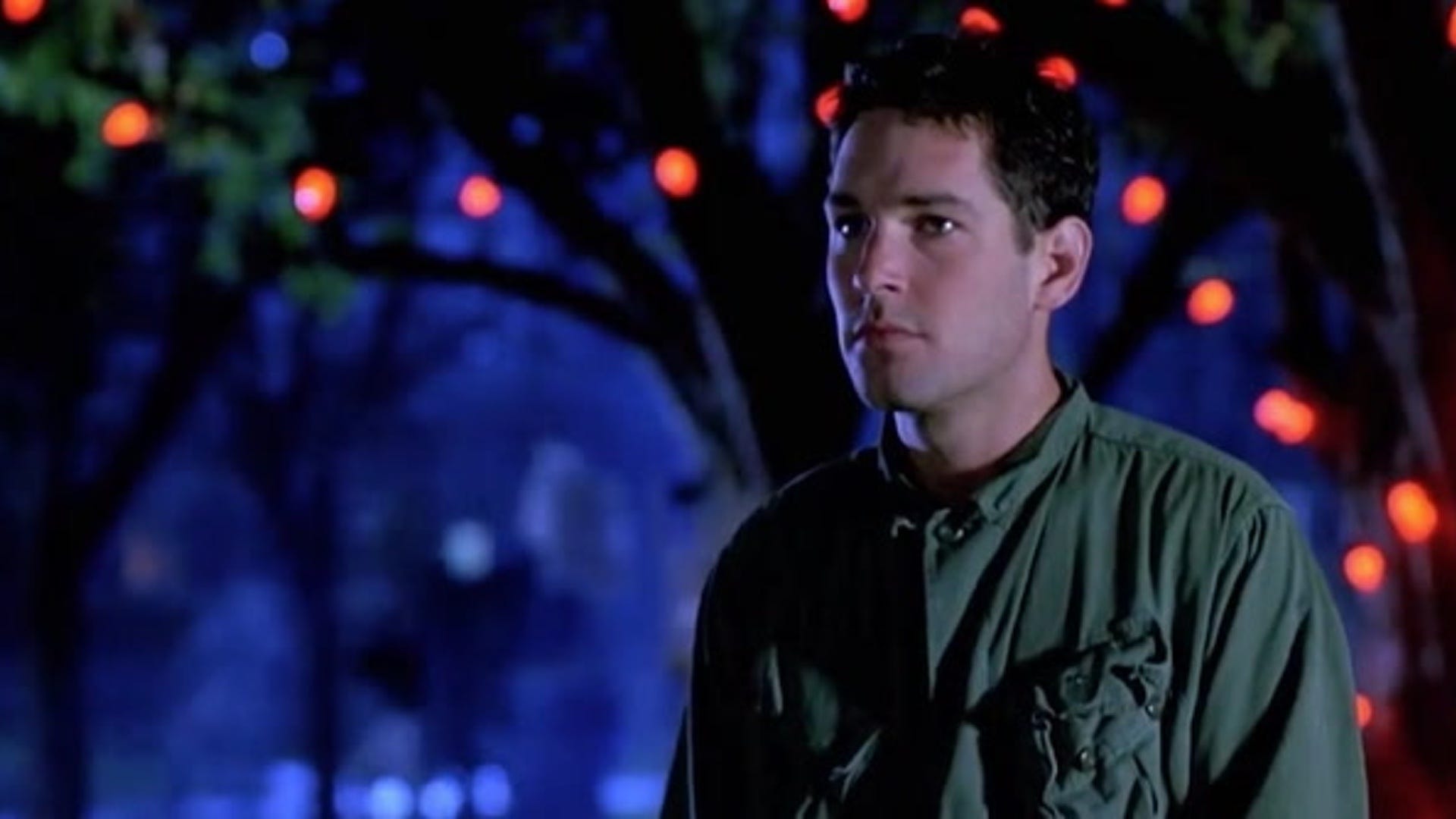Michael Myers Is At His Scariest in ‘Halloween: The Curse of Michael Myers’

There have been a dozen different versions of Michael Myers. Literally. There’s the wandering specter of John Carpenter’s original Halloween with his repurposed Captain Kirk mask and big, gleaming kitchen knife. The lumbering goof of Rick Rosenthal’s Halloween II feels more like an incidental killer, a slasher accidentally bumping hospital attendants off by sheer chance more than anything else. Michael Myers went briefly CG in Steve Miner’s Halloween H20, and in Rob Zombie’s remake duology, Michael was more brutal and textured than he’d ever been before. Everyone has a favorite, whether that’s motivated by the mask, the actor underneath, or even the respective movie. But, with so much Michael, which version is the scariest? There’s a lot to consider, but with each passing year, I become more convinced that’s the Michael of Joe Chappelle’s Halloween: The Curse of Michael Myers.

Michael, at his core, should be scary. From inception, he was the suburban boogeyman. His mythos and motivations would expand with every subsequent entry—often for the worst, including in the most recent trilogy— but Michael’s legacy was and remains that of the babysitter killer. The anonymous, masked maniac. A shadow. A shape. Evil incarnate, the embellished fears of an entire culture conceptualized within one man and his big kitchen knife.
Also Read: Evil Stayed Home: ‘Halloween Ends’ One Year Later
Halloween: The Curse of Michael Myers leans heavily into the evil of it all. That Michael Myers is actually, canonically cursed. Dr. Terence Wynn, a Smith’s Grove doctor, cursed Michael, perpetuating the Curse of Thorn’s Samhain legacy. And that curse is, by design, thorny. It makes little sense, intended more as a franchise adhesive six films in than anything more thematically meaningful. The introduction, famously, derailed the franchise, igniting the second Halloween timeline (at the time). Post Curse, Miramax had to look to the past, dredging Jamie Lee Curtis’ Laurie Strode up from the grave for a soft reboot to get the series back on track.
Wet with its yellows and reds, The Curse of Michael Myers is the most distinctly autumnal of the series’ many entries (Halloween 4’s opening title sequence notwithstanding). There’s a foreboding Midwestern gloom the series, too, irregularly tries to evoke. In Carpenter’s original, that makes some sense— the film was shot in California, after all—but subsequent entries never really harnessed the nostalgic, ostensible safety of a cozy fall evening to later render it something existentially dangerous.
And The Curse of Michael Myers is a dangerous movie, whether you watch the theatrical cut or the infamous Producer’s cut. A disastrous test screening compelled studio executives to reshoot and extensively edit the film, cutting out the more subversive elements for something brisker and, at times, safer. It’s really funny, though, since either version of The Curse of Michael Myers is still the weirdest Halloween has ever been, and it’s amusingly incredulous that anyone could look at the theatrical cut and think, “Yes, this is a safer movie.”
Also Read: ‘Halloween’ Fan Films and The Future of The Boogeyman
Are you kidding? The Curse of Michael Myers is weird. Revisiting the franchise in its entirety back in 2021, I even wrote that Curse has “strange Kim Darby deaths, a Michael Myers whose body is in constant flux on account of recasting… and is probably the closest a Halloween movie has come to emulating my own Mid-Atlantic Halloween celebrations.”

That familiarity might account for some of why Curse’s Michael is the scariest to me. Ambling around Haddonfield to Alan Howarth’s synth-pop score, Curse’s Michael stalks familiar fall icons. He’s back creeping between clotheslines, appearing shrouded in fog along rain-soaked evening streets. Here, Michael is back to being the boogeyman, the urban legend of 1990s trick-or-treaters—the scariest thing you might see on Halloween night. He’s the dare, the prod—“The boogeyman is gonna get you.”
Also Read: Halloween Horror Nights Almost Made Me Wet My Pants
It certainly helps that for the first time since the original, Michael is at least, in part, free from the constraints of Laurie Strode. Strode was the focal point of the first two, though Halloween pivoted to her daughter, Jamie Lloyd, in the two subsequent direct sequels. Say ‘hi’ to Halloween 3 on your way there. In either the theatrical or Producer’s cut, Jamie Lloyd is unceremoniously killed off during a Samhain ceremony. I prefer her theatrical cut death with one of Michael’s scariest moments in the entire franchise. Before he kills her by way of corn thresher, he appears briefly illuminated in the lightning before disappearing into the barn. It’s a moment of genuine chills, one of the few franchise beats to get back to basics with Michael as a slasher villain.
Critically, Joe Chappelle loves having Michael simply appear. His appearance during Kim Darby’s ill-fated escape is chilling. The Michael of Curse loves to just pop out. He’s in full ‘Boo’ mode, and Chappelle, despite a rocky production, has clear reverence his the slasher icon. Michael never looks anything less than great, and environmental design and lighting regularly augment Michael’s appearance. Here, he’s a work of genuine horror art—the stuff of nightmares.
And before Rob Zombie, Michael was at his most brutal. The Curse of Michael Myers is a bloody movie, especially compared to the entries that came before. Heads explode, axes are swung with abandon, and the capstone hospital massacre is operatic in its bloodshed. The supernatural undertones were more pronounced than ever before, but there are few moments as hopelessly, humanly frightening as Michael slamming a nurse’s head into a gate in ferocious, unyielding pursuit of his prey.
Also Read: ‘Halloween’ Sequel Goes Viral As Fans Celebrate Its Impeccable “Fall Feeling” Vibes

In grappling with an ever-expanding franchise continuity, Michael risked becoming a plot device more than anything else. A method of getting from one point to another. Beyond the familial connection, Michael’s past few appearances were at worst incidental. Without Haddonfield, did it even matter that he was the killer? In Curse, it did matter, and that made Michael all the more terrifying. He was a villain with purpose. Sure, it was a ceaseless, muddled supernatural purpose, but there was a drive to his spree that previous entries only gestured toward.
I have to live my truth. In the past, I’ve been hard on Halloween: The Curse of Michael Myers. I thought it was messy, sloppy—a movie with so much potential that unfortunately fell flat, effectively killing the franchise momentum. In the years since, Halloween has been punctuated by more Michael Myers than ever before. I’ve even delved into the realm of franchise fan films, chatting with the filmmakers looking to keep Michael’s legacy alive in fresh, inventive ways. Like most things we love, I was hard on the film, I think, precisely because of how much it meant to me.
Is it the best Halloween movie? No, probably not. But it is the boldest, even more so than Halloween Ends. In its uncompromising weirdness, Joe Chappelle and writer Daniel Farrands got Michael back on track. For the first time since 1978, he really was the boogeyman again. That’s not a curse—it’s a genuine, Halloween blessing.
Categorized:Editorials
